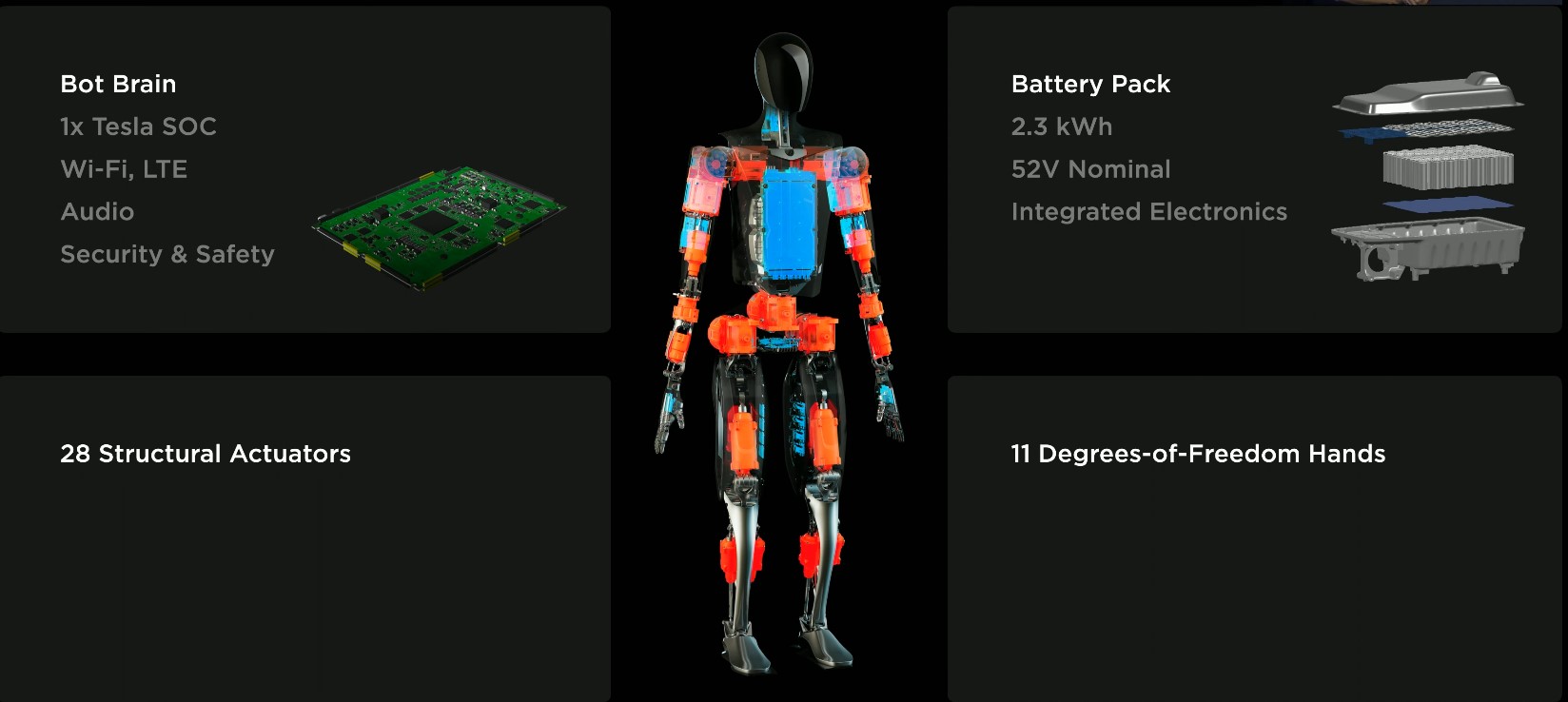Elon Musk demos the human-like Optimus Tesla Bot — and it walks on its own
Tesla targeting a price of under $20,000 for first-generation Optimus robot

Tesla has shown off the first prototypes of its humanoid Optimus robot. The aim is for the robot to “help millions of people” both in business and consumer settings, and to that end CEO Elon Musk is targeting a cost of under $20,000 per unit when built at volume.
Unveiled as part of the company’s AI Day, the Tesla Bot — with all its mechanical internals on full display — articulated its limbs, waved and shuffled around the stage unaided. This was the first time it had walked without being tethered, according to CEO Elon Musk.
Tesla Bot coming out and dancing 🤣 @elonmusk pic.twitter.com/TKT1lSGyqaOctober 1, 2022
Then a second prototype was revealed, closer to the kind of thing Tesla intends to put into production. This one “wasn’t quite ready to walk”, Musk said, but did demonstrate “the degrees of freedom” the company expects to see in the first commercially available units, which includes independent finger movements and opposable thumbs.
This is important as it means it can use tools and replicate other human functions that other robots simply aren’t dextrous enough to mimic well. Optimus is apparently “inspired by biology” with each finger being partnered by metallic tendons to mimic the flexible grip we humans take for granted.

You can see the section devoted to Optimus on the livestream video archived on the Tesla channel. Just skip to the 17-minute mark and enjoy.
Optimus has been designed “using the same discipline that we use in designing the car," Musk says. In other words, the company intends to “make the robot at a high volume at low cost with higher reliability.”
“That’s incredibly important because we’ve all seen very impressive humanoid robot demonstrations, and that’s great, but what are they missing?,” Musk asked, likely obliquely referencing the amazing acrobatics performed by Boston Dynamics’ Atlas. “They’re missing a brain, they don’t have the intelligence to navigate the world by themselves, and they’re also very expensive and made in low volume.”
Sign up to get the BEST of Tom's Guide direct to your inbox.
Get instant access to breaking news, the hottest reviews, great deals and helpful tips.
Navigating the chaos of the home, office and factory environments is a whole different level of challenge to the difficulties faced by self-driving cars which at least have dedicated highways and the rules of the road to follow.
Lizzie Miskovetz, a senior mechanical engineer at Tesla, was on hand to explain a bit of the company’s thinking in how to overcome the problem via a modified version of what it already ships within its cars.

“We want to leverage both the autopilot hardware and the software for the humanoid platform, but because it's different in requirements and in form factor, we’re going to change a few things first" Miskovetz explained.
“It's going to do everything that a human brain does: processing vision data, making split-second decisions based on multiple sensory inputs and also communications.” These will come via integrated Wi-Fi and cellular radios.
Within its frame, Optimus will also pack a 2.3kWh battery pack, which will apparently be good for a full day’s labor, just like your average human. It’ll consume 100W while sitting, or 500W while briskly walking, but Tesla has thought of ways to make the most out of it.
“Humans are also pretty efficient at some things and not so efficient at other times,” Miskovetz said. “For example, we can eat a small amount of food to sustain ourselves for several hours, [and] that’s great. But when we’re just kind of sitting around, no offense, but we’re kind of inefficient — we’re just sort of burning energy.
“So on the robot platform, what we're going to do is we're going to minimize that idle power consumption, drop it as low as possible. That way we can just flip a switch and immediately the robot turns into something that can do useful work.”

This is still a long-term project, and indeed much of the AI Day’s purpose is to inspire engineers to join Tesla and help bring projects like this to fruition. But with last night’s show, the company struck an upbeat note.
"After seeing what we've shown tonight, I'm pretty sure we can get this done within the next few months or years and maybe make this product a reality and change the entire economy,” concluded Milan Kovac, Tesla’s director of autopilot software engineering.
Tesla has been somewhat optimistic on promises and timelines in the past, but tonight’s show proved that it’s serious in its ambitions to be taken just as seriously for its robotics as its battery and driving tech.
Freelance contributor Alan has been writing about tech for over a decade, covering phones, drones and everything in between. Previously Deputy Editor of tech site Alphr, his words are found all over the web and in the occasional magazine too. When not weighing up the pros and cons of the latest smartwatch, you'll probably find him tackling his ever-growing games backlog. Or, more likely, playing Spelunky for the millionth time.

